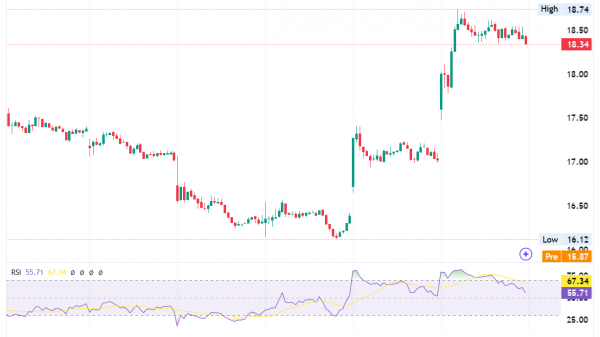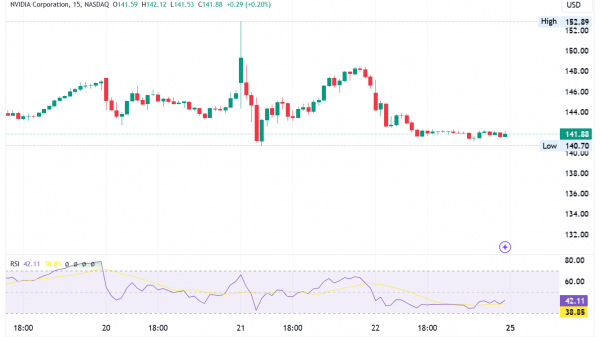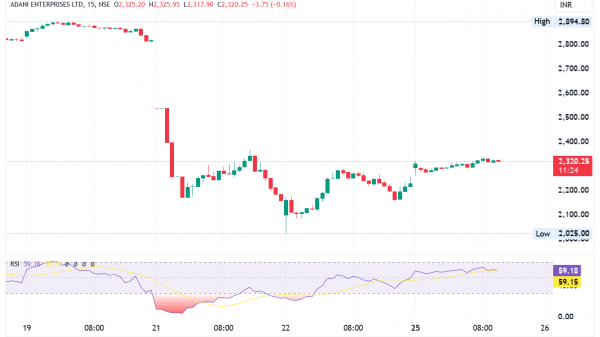10-9-8-7-6-5-4-3-2-1-Wait!
The countdown for America’s next journey to the moon is likely to be delayed — again.
An audit by the government’s main watchdog says it expects NASA to postpone the launch of Artemis III, the first human journey to the lunar surface since Apollo 17 in 1972. The crewed lunar landing was first planned for next year and now is officially slated for December 2025.
But don’t count on that.
“NASA and its contractors have made progress, including completing several important milestones, but they still face multiple challenges with development” of advanced spacesuits and the space transportation system, the Government Accountability Office (GAO) found in a recent audit of the mission. As a result, takeoff “is unlikely to occur in 2025.”
The GAO’s auditors project a launch date in early 2027, if development follows NASA’s usual timeline. Currently, NASA is on “an ambitious schedule … 13 months shorter than the average,” the GAO wrote. “The complexity of human spaceflight suggests that it is unrealistic to expect the program to complete development more than a year faster than the average for NASA major projects, the majority of which are not human spaceflight projects.” While NASA hoped to proceed faster than usual, the GAO said the program is “achieving key events at a slower pace.”
In fact, a 2027 launch would be closer to NASA’s original goal of 2028. That was before March 2019, when, under President Donald Trump, “the White House directed NASA to accelerate its plans for a lunar landing” to 2024, according to the audit, “in part to create a sense of urgency in returning American astronauts to the moon.”
In November 2021, NASA pushed the landing back to at least 2025. The space agency says Artemis III will be the first mission to the lunar south pole and “will land the first woman and first person of color on the surface of the Moon,” while noting that their selection will be based on the right crew for the mission. So far, all 12 moon walkers have been White American men.
NASA has not officially announced a rescheduling, but it acknowledged that likelihood in an email to The Washington Post. The agency said it is working with its partners “to develop a timeline for the path to Artemis III. … All contractors and partners for the different elements of Artemis must deliver on time for the success of the mission and the agency’s exploration goals.”
This is a very intricate project. Various complications can thwart on-time air travel from one city to the next, but that’s nothing compared with moving a crew of people 238,855 miles away to an inhumane environment.
“The Artemis III mission is the third in a series of increasingly complex missions to maintain U.S. leadership in space exploration, build a sustainable lunar presence over the next decade,” the GAO said, “and ultimately travel to Mars.”
Just as today’s cars are more complicated than those a half-century old, so too are today’s lunar landing operations. That includes astronauts’ moon suits and the “human landing system” that transports crew members from the spaceship to the lunar surface. The five-year cost for both in President Biden’s budget request is $12.4 billion.
In addition to the ambitious schedule, the GAO report cited these reasons for the delayed timetable:
● Delays to “key events.” Those include the destruction of a SpaceX vehicle, central to the moon mission, that “began to break up about 4 minutes into the flight after the vehicle deviated from the expected trajectory, lost altitude, and began to tumble” during an orbital flight test in April. Eight of 13 key events in the landing system’s development were delayed by six to 13 months.
● Lots of remaining work, including on methods to “transfer propellant to a depot in space before transferring that propellant to the human landing system. … SpaceX has made limited progress maturing the technologies needed to support this aspect of its plan.” SpaceX, founded by Elon Musk, did not respond to a request for comment.
● Design challenges. Axiom, the spacesuit contractor, also is confronting significant issues. “For example, NASA’s original design did not provide the minimum amount of emergency life support needed for the Artemis III mission,” the GAO said. “As a result, Axiom representatives said they may redesign certain aspects of the space suit, which could delay its delivery for the mission.”
Russell Ralston, an Axiom vice president, said by email that the company “is actively engaged in innovative work” on spacesuit technologies “needed to sustain 60 minutes of emergency life support. As the report points out, this is forward work that could take additional time.”
These concerns are not new. In August 2021, NASA’s Office of Inspector General documented spacesuit development delays and said that by the time work is complete on two new suit systems, called Extravehicular Mobility Units, which include the hardware connecting astronauts to flight vehicles, “NASA will have spent over a billion dollars on the development and assembly of its next-generation spacesuits.” Current models have been refurbished and partially redesigned, but they still are 45 years old.
Because of the delays, the GAO said “NASA will have a relatively short amount of time to ensure” all safety requirements are met “before the mission start.”
The Artemis III delay is no surprise to John M. Logsdon, the founder and former longtime director of George Washington University’s Space Policy Institute. The GAO’s audit “echoes a pretty widespread sentiment in the space community that it would take a set of miracles for us now to meet the 2025 date,” he said. “Too many things have to go right for that to be a possibility.”
Furthermore, he added, “the delays are part of a general pattern in the program.”
NASA’s “Moon to Mars” program includes seven Artemis missions through 2031, under the current schedule. Each mission’s timetable is dependent on the previous missions. Artemis I and Artemis II were behind schedule. Artemis III inherited their tardiness. In September 2022, the GAO found that “NASA delayed Artemis mission time frames and key program milestones several times. … Delays to the Artemis I launch have a cascading effect on the Artemis II and III mission schedules because there is a minimum time needed between those missions. NASA also delayed the Artemis II mission to May 2024, 13 months past the original April 2023 launch date.”
But once all the kinks are worked out, “this mission will usher in a future in which humans consistently access the Moon,” NASA predicted, “and human planetary exploration missions are within reach.”


































